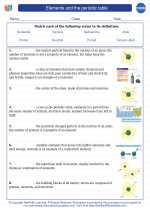Chemical Bonding
Chemical bonding is the process by which atoms combine to form compounds. This interaction occurs through the sharing or transfer of electrons between atoms, leading to the formation of chemical bonds.
Types of Chemical Bonds
1. Ionic Bonds
In ionic bonding, one or more electrons are transferred from one atom to another, resulting in the formation of positively and negatively charged ions. These ions are then held together by electrostatic forces, forming an ionic compound.
2. Covalent Bonds
Covalent bonding involves the sharing of electron pairs between atoms. This sharing allows each atom to achieve a more stable electron configuration, leading to the formation of molecules.
3. Metallic Bonds
Metallic bonding occurs in metals, where the outer electrons of the metal atoms are delocalized and free to move throughout the material. This results in a "sea of electrons" that hold the metal ions together in a solid structure.
Properties and Characteristics of Chemical Bonds
- Strength: Different types of chemical bonds have varying strengths, with ionic bonds generally being stronger than covalent bonds.
- Melting and Boiling Points: The type of chemical bond affects the melting and boiling points of substances, with ionic compounds typically having higher melting and boiling points than covalent compounds.
- Conductivity: Ionic compounds conduct electricity when dissolved in water or in a molten state, while covalent compounds generally do not conduct electricity.
- Structure: The arrangement of atoms and the type of chemical bonds present determine the structure of a compound, influencing its physical and chemical properties.
Key Concepts for Understanding Chemical Bonding
- Valence Electrons: The outermost electrons in an atom that participate in bonding. The number of valence electrons influences an atom's reactivity and its ability to form bonds.
- Octet Rule: Atoms tend to gain, lose, or share electrons to achieve a stable configuration with eight electrons in their outermost shell (except for hydrogen and helium, which follow the duet rule).
- Electronegativity: The ability of an atom to attract shared electrons in a chemical bond. It influences the type of bond formed between two atoms (ionic or covalent).
- Polarity: Covalent bonds can be polar or nonpolar, depending on the electronegativity difference between the atoms involved. Polar bonds result in a separation of charge, creating partial positive and negative poles within a molecule.
- Resonance: Some molecules can have multiple valid Lewis structures due to the delocalization of electrons, leading to resonance structures that contribute to the overall stability of the molecule.
Studying Chemical Bonding
To effectively study chemical bonding, it is important to understand the fundamental concepts and principles associated with the topic. Here are some study tips:
1. Understand the Structure of Atoms
Review the basics of atomic structure, including the arrangement of protons, neutrons, and electrons within an atom. Pay close attention to the concept of valence electrons and their role in chemical bonding.
2. Learn the Types of Chemical Bonds
Study the characteristics of ionic, covalent, and metallic bonds, including their formation, properties, and examples of compounds that exhibit each type of bonding.
3. Practice Lewis Structures and Bonding Models
Work on drawing Lewis structures for molecules and polyatomic ions. Understand the concept of formal charge and use VSEPR theory to predict molecular geometries based on the number of bonding and nonbonding pairs of electrons.
4. Explore Bond Polarity and Electronegativity
Understand how differences in electronegativity between atoms influence the polarity of bonds and molecules. Practice identifying polar and nonpolar covalent bonds based on electronegativity values.
5. Study Examples and Applications
Examine real-world examples of chemical bonding, such as the properties of common compounds, the behavior of materials under different bonding scenarios, and the applications of specific bonding types in various industries.
6. Review Key Concepts and Definitions
Regularly review the definitions of terms such as ionic radius, lattice energy, bond enthalpy, and molecular orbital theory to solidify your understanding of chemical bonding concepts.
By mastering these key concepts and practicing related problems, you can develop a strong understanding of chemical bonding and its significance in the field of chemistry.
[Chemical Bonding] Related Worksheets and Study Guides:
.◂Chemistry Worksheets and Study Guides High School. Elements and the periodic table
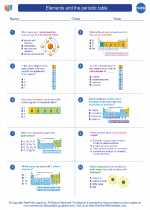
 Worksheet/Answer key
Worksheet/Answer key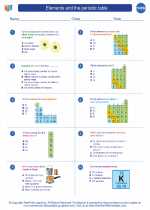
 Worksheet/Answer key
Worksheet/Answer key
 Vocabulary/Answer key
Vocabulary/Answer key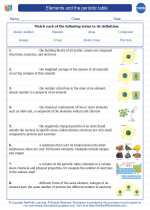
 Vocabulary/Answer key
Vocabulary/Answer key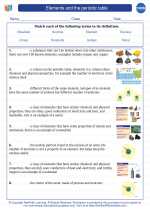
 Vocabulary/Answer key
Vocabulary/Answer key